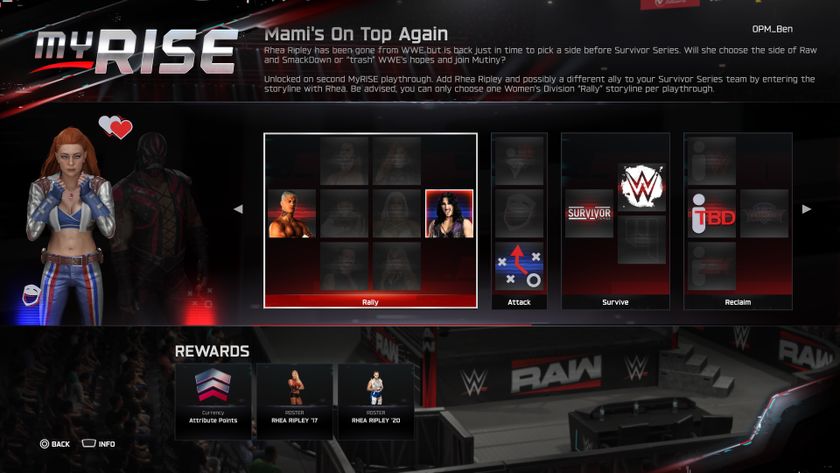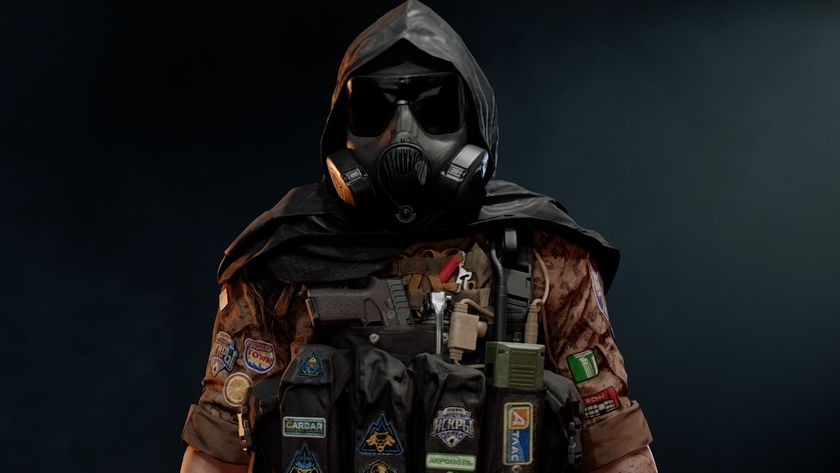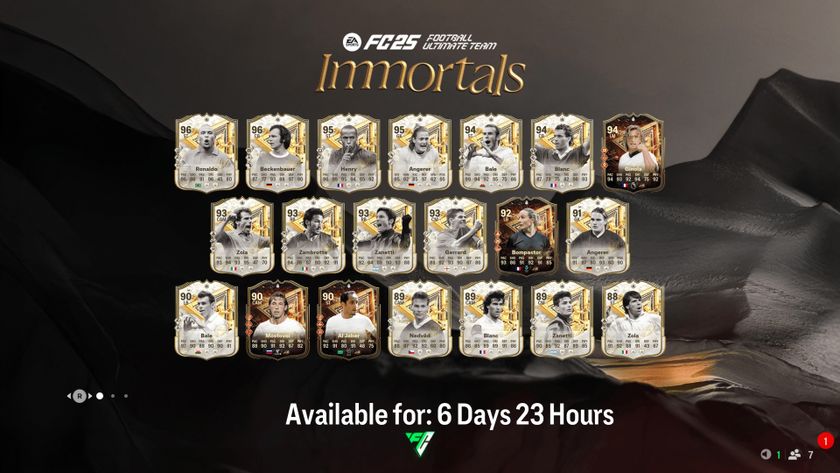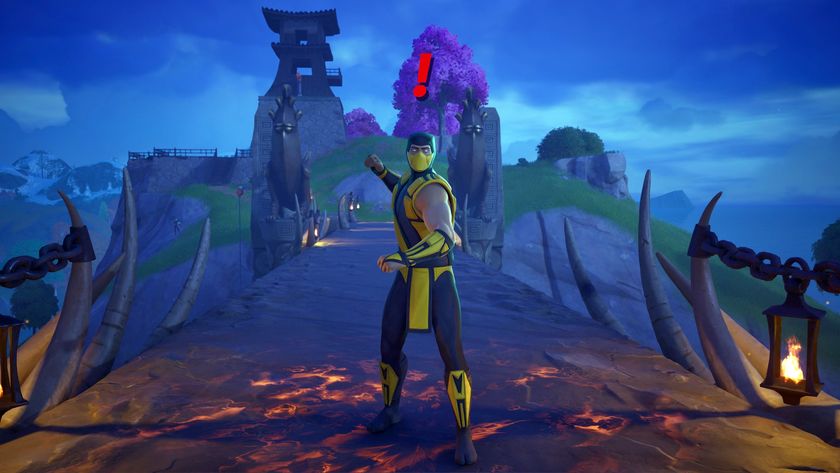UFC Undisputed 3 beginners guide
Quick and easy tips to turn you from pretender into a contender
It’s been a while since THQ last released a UFC Undisputed title, and in that time, the mixed martial arts fighting league has seen its audience grow exponentially. With so many new fans just learning the ins and outs of MMA, we’ve created this guide to give newcomers a leg up on the competition.
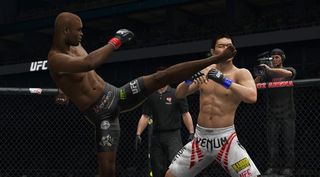
There are dozens of ways to play the game, but we’ll give you some general tips to get you started, and break down the game’s modes.
General Tips
Play the tutorial… all of it.
Nothing will prepare you for fighting in the octagon like UFC’s deep and detailed tutorial. Covering everything from the basics of striking to the intricacies of the ground game, the tutorial in UFC Undisputed 3 will give you a great base to build your particular play style upon. Though the sheer volume of controls can be an awful lot to take in all at once, any part of the tutorial can be replayed again once you complete it. Learning all that UFC Undisputed 3’s controls have to offer will not only help you become a more well-rounded fighter, but it should give you an edge when playing against a friend or the computer.
Practice, practice, practice.
It should come as no surprise that the more you play UFC Undisputed 3, the more familiar you will become with how the game plays. With a roster of 150 fighters, you’ll be surprised to find just how differently each fighter controls. There’s no shame in playing loads of exhibition fights on easier difficulty settings to learn what types of strikes each fighter is capable of throwing, or which fighters are better at taking the action to the mat. Every fighter has a variety of regular, quick, and unique technique strikes they can throw from different ranges. It’s better to learn when and how those strikes are thrown when you can experiment, and not in the middle of a fight that matters in either your career or online.
The clinch and takedown can save your fight.
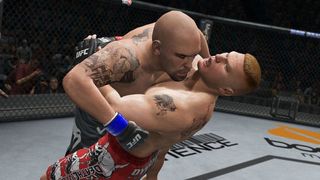
Even though most fights in Undisputed 3 end in either a knockout or a TKO, that doesn’t mean knowing when and how to take an opponent down won’t help you win a fight. The ground game is an important aspect of MMA, but the most vital time to use it is when your fighter is rocked. Repeated blows to the head will cause your fighter to enter a dazed and extremely vulnerable state. Just a few more blows might be all it takes to finish you off. At this point, it’s best to attempt a takedown, or to clinch up with your opponent. Not only will getting the takedown or clinch put you in a more favorable position of control, but it will also stall your opponent’s strikes long enough for you to recover from the punch drunk haze. Even if you choose to stand right back up again after you regain your composure, a well-timed takedown can mean all the difference between a fight ending, or the momentum swinging back in your favor.
Work on your transitions.
When on the ground, there’s a whole new set of controls that come into effect. If you took our advice and played the tutorial, you’d know the key to a strong ground game lies in the transition. This year’s edition of Undisputed has a new “amateur” transition control scheme for new players. Though you lose some of the technical proficiency, the “amateur” controls simplify transitions down to a simple flick of the right stick. Flicking up causes your player to attempt a minor transition, which will move them incrementally into better position, while flicking down attempts a major transition. Major transitions move your fighter into better position quicker, but are easier to reverse, and can lead to your opponent flipping you onto your back if they pull off a reversal. Knowing how to time your transition, and when to use major and minor moves is something that will come with practice, but becoming proficient in the ground game can give you an incredible edge in the octagon.
Bob and weave. Stick and move.
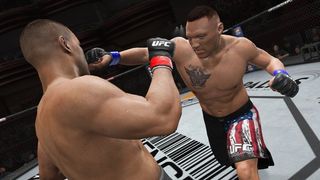
Blocking isn’t the only important way to prevent damage from strikes. Utilizing UFC’s sway technique can also keep your pretty little face from getting mangled. By holding in the top right button, and flicking the left stick in any direction, your fighter will bob his head and shoulders away from a strike in the direction you flicked. Timing the sway is important. If you attempt it too late, you’ll still get hit, though for less damage. If you attempt it to early, your opponent will have time to adjust, and can strike you as you’re coming back to center. Evading at the right time will not only keep you from harm’s way, but you can also strike back with a devastating counter punch or kick if you timed your sway properly.
Additionally, there’s no real reason to stand right in front of your opponent and trade blows. The best fighters know how to jump in for a few quick strikes and retreat before their opponent has a chance to do any damage. Staying light on your feet and constantly moving will only help you in the long run. You can quickly jump in and out of the way in any direction by quickly tapping the left stick twice the way you want your fighter to move. The quick hop will almost always put you back out of your opponent’s range, unless they have a distinct advantage over you in that regard. Keeping your fighter on the move, and out of range of your opponent will not only frustrate them, but will likely cause them to become more aggressive. Capitalizing on their aggressiveness by swaying and countering can turn the fight in your favor quickly.
Submitting is a challenge, but one that’s worth the risk.
There’s a lot to like about the new submission system implemented in UFC Undisputed 3. First and foremost, you no longer have to break your wrist spinning the right stick to sink in or avoid a submission. In this year’s game, a new mini-game pops up in the middle of the screen anytime a submission has been engaged. Those attempting a submission will chase an opponent’s colored bar around an octagon trying to contain it. The longer you’re able to keep your opponent’s bar contained, the faster the submission bar fills up. If you’re trying to avoid being submitted, you just have to keep out of your opponent’s reach long enough to escape. While it’s a bit easier for the person being submitted to attempt an escape, those attempting the submission have one neat trick at their disposal. Whatever direction you click the right stick is where your bar will start. You can get a bit of a head start filling up the meter by clicking the stick to the right, the default starting position for the opposing player’s bar. It’s a battle of reflexes, but when you sink in a submission, or escape one, the feeling of satisfaction is unmatched.
Pride rules change the game dramatically.
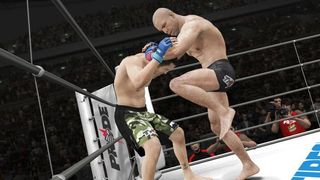
For the first time in the Undisputed series, you can know fight in the Japanese Pride league. The rule set isn’t just different, it allows for much more brutal fights. Where fights in the UFC are either 3 or 5 five-minute rounds, Pride will always have a ten-minute first round, with subsequent rounds clocking in a five minutes. Instead of taking place in an octagon, Pride fights take place in a boxing ring, and fighters are allowed to knee and kick downed opponents in the head and face. Such blows to the head are incredibly difficult to recover from, and will quickly end a fight. Additionally, Pride judges typically score a fight based on aggression and damage, whereas UFC judges will score a fight on technique and takedowns just as much. It’s still very difficult to have a fight go the distance, particularly with the more brutal rules, but it still helps to know what type of strategy will look good in the judges’ eyes should the fight go to a decision.
Study good fight strategies by watching computer fights.
You can set up tournaments, exhibition fights, or events solely filled with computer fighters. You can also watch events during your career that you’re not participating in. It might seem odd to just sit and watch the computer duke it out in the octagon, but you can actually learn a lot from watching how the computer plays the game. The AI will make use of all the game’s tools like sway, countering, takedowns, and submissions. A well-rounded fighter will almost always have more success than a one-trick pony, so getting an idea of how and when to use certain strategies by learning from the computer is a simple and easy task. Setting up fights between current top contenders in the real UFC will not only be interesting to watch, but you’ll even learn a few tricks about how to better fight those particular computer opponents.
Sign up to the GamesRadar+ Newsletter
Weekly digests, tales from the communities you love, and more

Super Smash Bros. Director Masahiro Sakurai has a friend in Undertale developer Toby Fox - all because of how deeply their posts are read into

Smash Bros creator Masahiro Sakurai is surprised the Switch 2 Direct is an hour long, and no, he doesn't know what's coming, even if "people are going to suspect no matter what"


